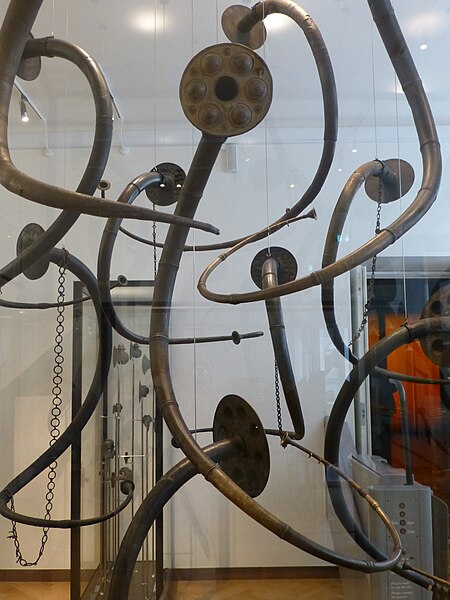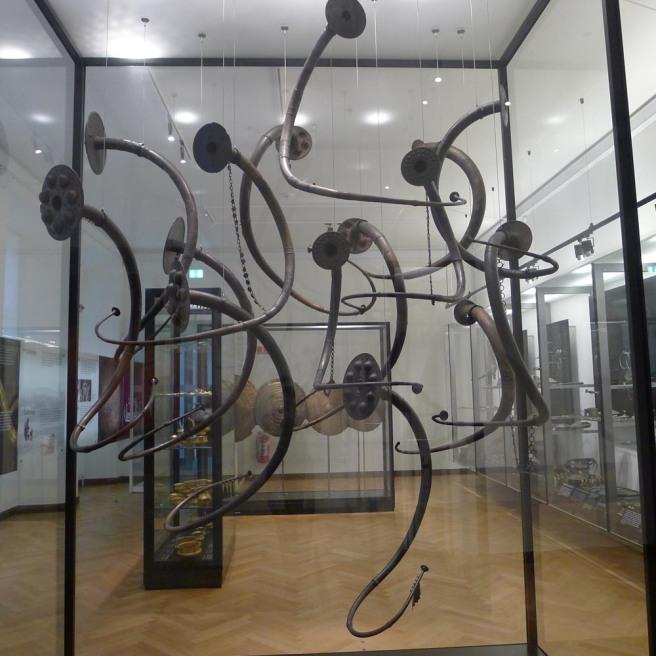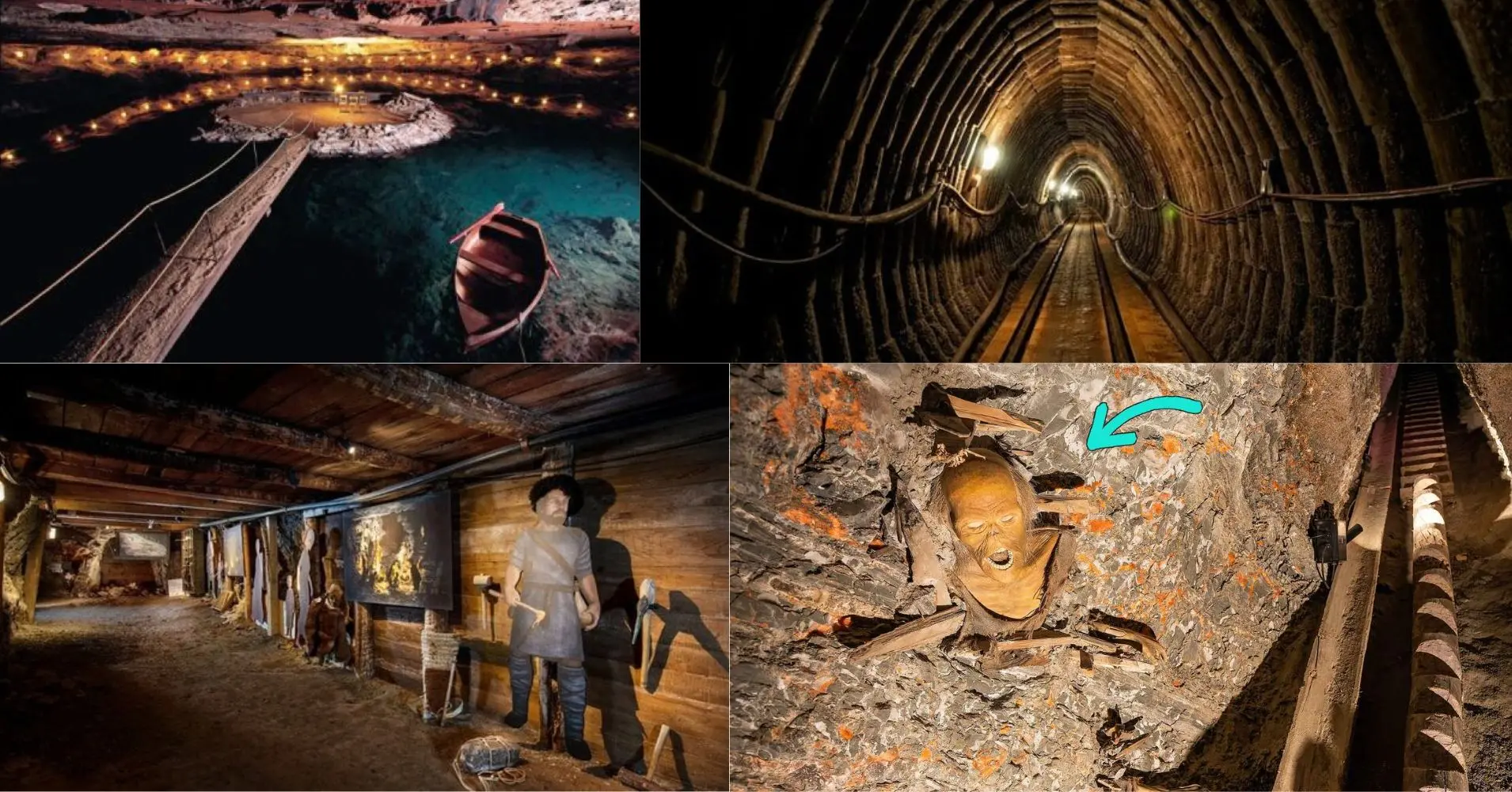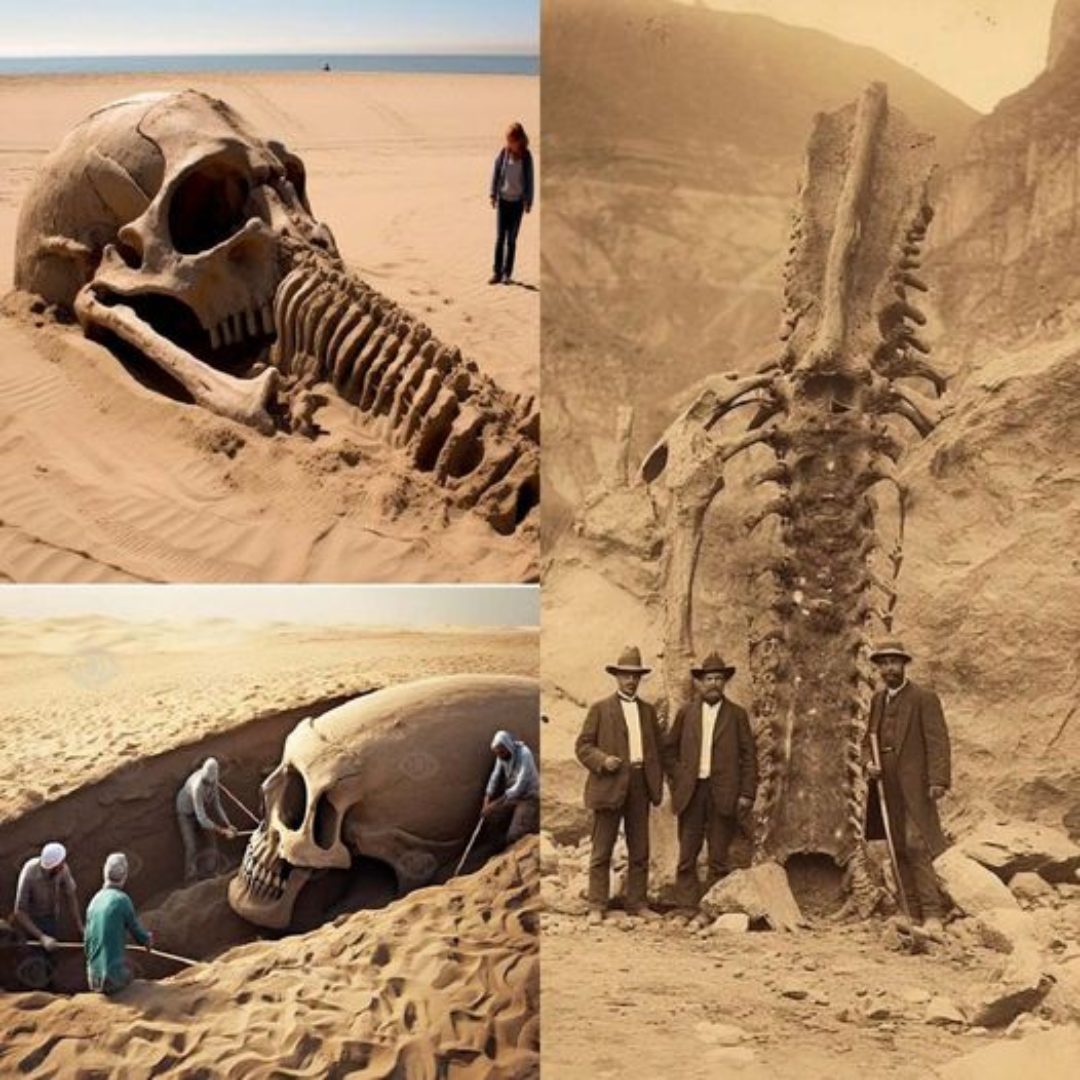These Bronze Age lurs from Denmark are wind instruments cast in bronze around 1000 BC, making them approximately 3,000 years old. Most of these lurs have been found in Denmark, with a total of 39 discovered so far.

They have also been found in Sweden, Norway, and northern Germany. The curving shape of the lurs is reminiscent of ox horns, which may have served as a model for their design. In Denmark, lurs are usually found in pairs and always in bog deposits, suggesting that they were placed there as votive offerings.
The name ‘lur’ is of recent date and was used by archaeologists at the beginning of the nineteenth century. It originates from the Icelandic sagas, which mention that ‘the warriors were summoned to battle with the lur’.

However, it’s more likely that the lurs were used in connection with rituals, as depicted in Swedish rock carvings from the Bronze Age showing lur-blowers participating in processions or religious rites. These remarkable instruments are now housed at the National Museum of Denmark, where they continue to intrigue and educate visitors about the rich history of the Bronze Age.

Bronze Age lurs from Denmark. These horns are wind instruments cast in bronze 3,000 years ago. Usually found in pairs, 39 have been recovered from peat bogs, where it’s thought they were placed as votive offerings. Now housed at the National Museum of Denmark





